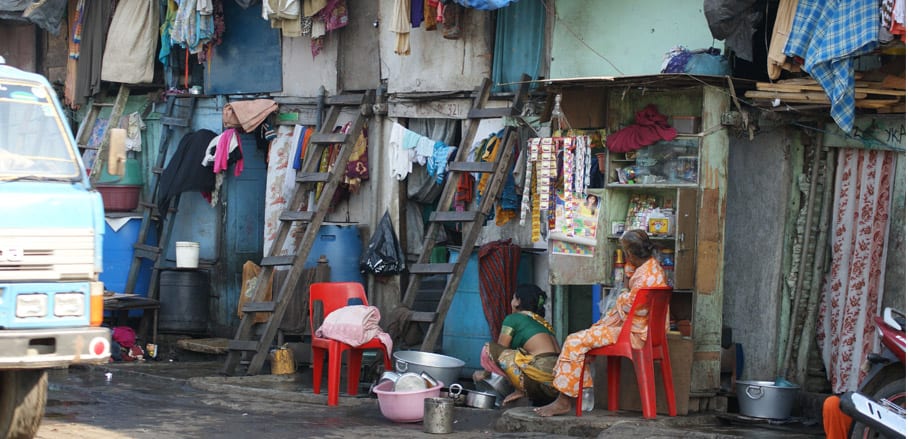Spotlight on livable cities, Part I: India’s Urban Transformation
by Shipra Narang Suri
What do cities in India need to be more livable? In the four part series “Spotlight on livable cities”, ISOCARP Vice-President Shipra Narang Suri aims to answer this question by approaching it from various angles, giving examples from different areas of urban planning. In this first part, she outlines the shift in urban growth in India and measures that are being taken in response to it.
India’s urbanisation is a paradox of sorts. The country’s urban population is undoubtedly vast at 377 million (2011 Census). In international terms, however, India’s urban growth can hardly be described as rapid. Despite the fact that the fastest urbanization rates are being witnessed in the developing world, India’s urban population increased from 17.3 per cent in 1971 to just 23.3 per cent in 1981, and 27.78 per cent in 2001. But there are over 80 million people living below the poverty line in India’s urban centres; a quarter of the total urban population lives in slums. Informal settlements, informal livelihoods, homelessness, insecurity, various types of pollution and declining green areas are the bane of most Indian cities. Combined with emerging concerns about climate change and the regular occurrence of natural disasters, Indian towns and cities seem to sitting on a ticking time bomb.
The other characteristic of India’s urbanisation is that it is ‘top-heavy’, which means that the larger cities1 have witnessed much more rapid growth than smaller towns. While the unequal spatial distribution of urban population across the country has been a cause for concern for the policymakers at the highest level, urbanisation strategies currently being implemented seem to advance the same trend.
The formal planning system has seen little change since independence, and most towns and cities rely on inflexible master plans which are more often than not outdated by the time they are completed. Rigid development control norms which are flouted at every step, and a weak governance system which can neither guide nor enforce, completes the sorry picture. Recent policy innovations such as the National Urban Renewal Mission launched in 2005 have triggered some changes, but have sidestepped the existing planning processes. Other recent events, including increasingly frequent violent protests on issues such as rural land acquisition for urbanisation and industrialisation, and the widespread political posturing on the issue, seem to once again pitch urban centres versus rural areas, or “India” versus “Bharat”, as the country is commonly known in Hindi.
Given this scenario, many of India’s cities have taken it upon themselves to introduce innovative measures. Improvements in public transport are becoming increasingly common and characterised by innovative planning and the use of modern technology – Delhi, for instance, has pioneered the use of Compressed Natural Gas, a low-polluting fuel, for all modes of public transport, while Ahmedabad has launched an extremely successful Bus Rapid Transit system (See infobox). Disaster risk management plans are being developed, institutionalised and implemented, as has been done by Mumbai, to protect cities and their residents from natural and man-made disasters. Renewal and revitalisation of older areas within cities is also being promoted. Urban infrastructure, water and sanitation systems are being revamped – in fact this is the overarching focus of recent policy reforms; safety and security in public spaces is being enhanced through improved infrastructure and more responsive policing; and communities are being empowered through skill development, participation and partnerships in a number of cities across the country.
This four-part series attempts to build a complete picture of India’s urban transformation and the major challenges of liveability faced in Indian cities. Liveability is understood here as including notions of inclusion (implying not only social integration and cohesion, but also enabling the widest range of stakeholders to make the best of the opportunities a city offers, as well as participate actively in decision-making), resilience (referring to adaptability, flexibility and balance; the ability of a city to “invent” or “re-invent” itself in response to shocks and stresses, to harmoniously accommodate old and new values, and to adapt the functions and requirements of the city), and authenticity (which involves maintaining the local character of the city, the local heritage, culture and environment, while evolving and accommodating social, economic and technological changes).
Using a wide range of illustrations and examples, I argue that to build liveable cities in India, a fundamental shift in the approach to urban planning and development is required. Keep a look out for the next part of our “Spotlight on liveable cities” series, “The Changing Mechanics of Planning”, that is going to be published in the upcoming days!
- Spotlight on livable cities, Part IV: Building livable cities - 1. December 2016
- Spotlight on livable cities, Part III: Responding to the challenge of livability - 29. November 2016
- Spotlight on livable cities, Part II: The Changing Mechanisms of Planning - 23. November 2016
